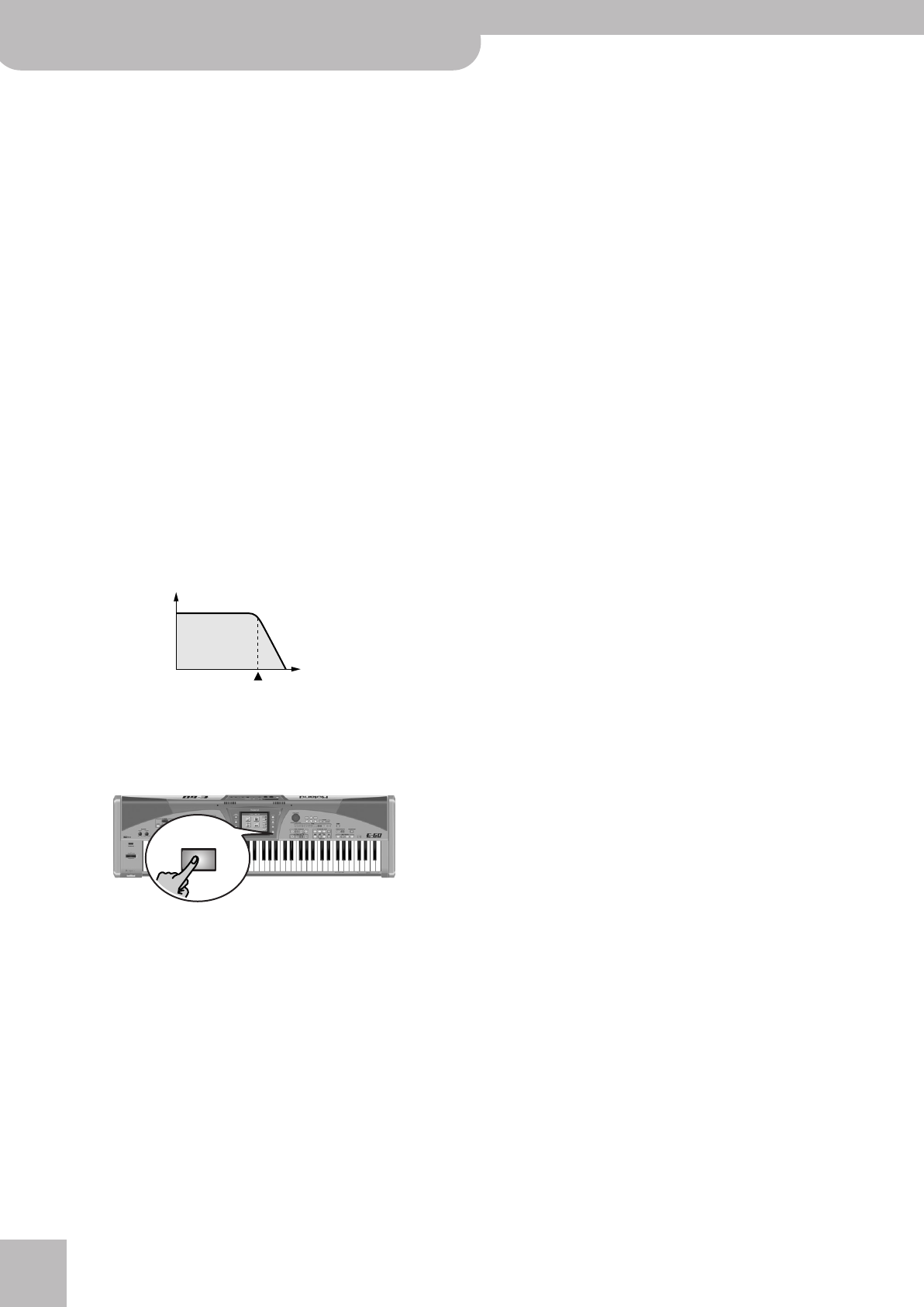
Advanced Keyboard part functions
80
r
E-60/E-50 Music Workstation
● RELEASE [–64~63]—This parameter adjusts the time
over which the sound will decay after the note is
released until it is no longer heard. The cutoff frequency
will also fall according to this setting.
■TVF (filter)
By modifying the filter settings, you can control the
timbre (tone) of the sound. The E-60/E-50 uses Low-
Pass Filters (LPF) that allow only frequencies below
the specified frequency to pass. The frequency where
the filter starts “cutting off” harmonics (or overtones)
is called the “Cutoff Frequency”. The cutoff frequency
can change over time, controlled by the envelope.
● RESO [–64~63]—This is a parameter one invariably
associates with a synthesizer. When the Resonance value
is increased, the overtones in the area of the cutoff fre-
quency will be emphasized, creating a sound with a
strong character.
Note: For some sounds, negative (–) RESO settings may pro-
duce no noticeable change because the Resonance is
already set to the minimum value.
● CUTOFF [-64~63]—This filter parameter allows you to
make the selected sound darker or brighter. Positive Cut-
off settings mean that more overtones will be allowed to
pass, so that the sound becomes brighter. The further
this value is set in the negative direction, the fewer over-
tones will be allowed to pass and the sound will become
softer (darker).
Note: For some sounds, positive (+) Cutoff settings will cause
no noticeable change because the preprogrammed Cutoff
parameter is already set to its maximum value.
(8) Press the [EXIT] button to return to the main page.
Characteristics of a low-pass filter
Cutoff frequency
Frequency
Setting
EXIT
E-60_50_OM_UK.book Page 80 Thursday, June 22, 2006 10:06 AM


















